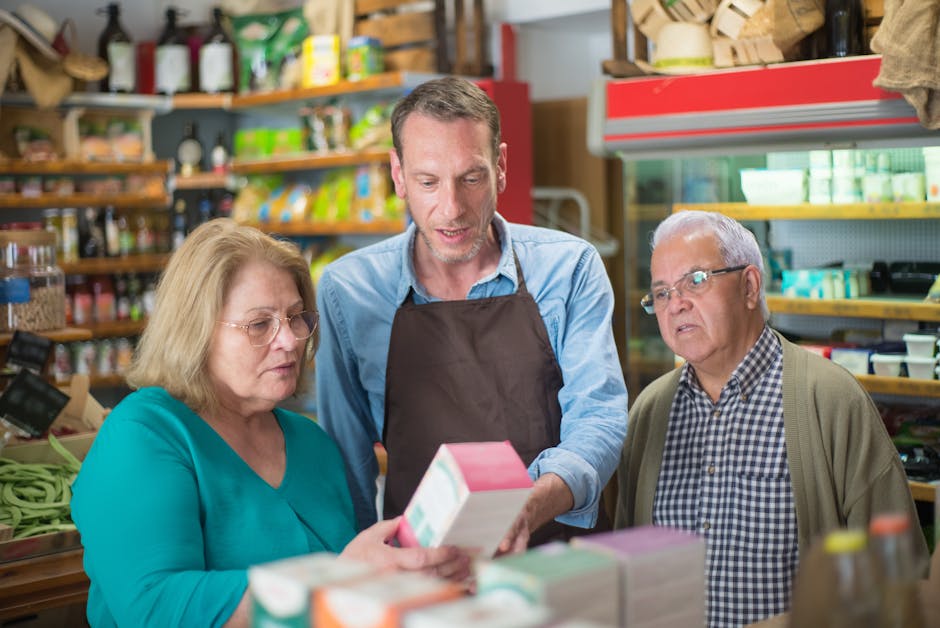Ever walked out of a grocery store wondering how your cart got so full and your wallet so light? You’re not alone, and guess what? The store is designed to make that happen.
Grocery stores are experts at nudging you toward spending more without you even realizing it. It’s not just about tempting snacks or flashy sales.
From shelf placement to lighting, every little detail is carefully planned to boost your spending. And once you know the tricks, it’s easier to shop smarter.
Let’s dive into some of the sneaky tactics grocery stores use to get you to spend more. Awareness is the first step toward saving.
Ready to see what’s really going on behind those aisles and checkout lines? Here are 25 sneaky grocery store tricks that’ll open your eyes—and maybe your wallet a little less.
Time to become a grocery shopping ninja and keep more money in your pocket. Let’s get started!
Store Layout and Product Placement Tricks
Grocery stores are carefully designed to maximize your spending through their layout. The flow of aisles and product placement isn’t random; it’s a strategic plan to expose you to as many products as possible.
By guiding you through certain paths and placing essentials in specific spots, stores increase the chances of impulse buys. Understanding these tactics helps you navigate the store more intentionally.
Here are some common layout and product placement tricks you might not have noticed:
1. Essentials at the Back – Staples like milk, eggs, and bread are usually placed at the back of the store. This forces you to walk past numerous tempting aisles filled with snacks, drinks, and other impulse items before reaching what you actually need.
2. Deceptive “End Caps” – The shelves at the end of aisles, called end caps, are prime spots for higher-margin or promotional items. These items catch your eye as you turn corners, encouraging unplanned purchases.
3. Eye-Level Placement – Products at eye level sell better, so stores place the most profitable or promoted brands right where you’re likely to look first, while cheaper alternatives are tucked away on lower or higher shelves.
4. Wide Aisles Near Essentials – Areas near essential goods often have wider aisles with more product variety, making you linger longer and increasing the chance of adding extra items to your cart.
5. Strategic Product Grouping – Stores group complementary products together, like chips near salsa or pasta near sauce. This encourages you to buy multiple items that go together, boosting your overall spend.
Recognizing these layout strategies can help you resist detours and stick to your list. Next, we’ll explore how pricing tactics trick you into spending more.
Pricing Strategies That Encourage Overspending
Pricing isn’t just about numbers; it’s psychology. Grocery stores use clever pricing strategies designed to make you feel like you’re getting a deal—or coax you into spending more.
These tactics tap into our instincts and biases, so even savvy shoppers can fall for them. Being aware of how prices are presented helps you make clearer decisions.
Here are five pricing tricks to watch out for:
6. Charm Pricing – Prices ending in .99 or .97 make an item look cheaper than it really is. A $4.99 price tag feels like a better deal than $5.00, even though it’s just a penny difference.
7. Multi-Buy Deals – Offers like “Buy One, Get One 50% Off” encourage you to buy more than you need. Many times, the per-unit price isn’t actually a bargain when you do the math.
8. Smaller Packages at Higher Unit Prices – Smaller product sizes often cost more per ounce or unit than larger ones, but they’re placed next to standard sizes to confuse shoppers who don’t check unit prices carefully.
9. Rounding Up Prices – Odd prices like $2.83 or $3.76 are less common, but stores sometimes use them to subtly influence perceived value, making you think the price was carefully calculated and fair.
10. Discount Stickers on Slightly Damaged Goods – Yellow or red stickers signal a deal, but often these items are close to expiration or slightly damaged. The “deal” may not be as good as it seems once you consider waste.
Next up, we’ll uncover how sensory tricks like lighting and music influence your shopping mood and spending.
Ambiance and Sensory Tricks
Shopping is an experience, and grocery stores know this well. They carefully craft the ambiance to make you feel comfortable, relaxed, and more willing to spend.
From lighting to music, these sensory elements affect your mood and shopping pace, often without you realizing it. Once you notice these tricks, you can shop more mindfully.
Here are some of the sneaky sensory tactics stores use:
11. Warm Lighting in Produce Sections – Soft, warm lights make fruits and vegetables look fresher and more appealing. This encourages you to buy more fresh produce, which often has higher profit margins.
12. Slow, Relaxing Music – Playing slower tempo music causes shoppers to move at a slower pace, spending more time browsing and ultimately adding more items to their carts.
13. Fresh Bread Smell – The aroma of freshly baked bread near the entrance or bakery section triggers hunger and nostalgia, prompting impulse purchases of bread and related items.
14. Clean and Spacious Aisles – Keeping aisles tidy and uncluttered makes shopping more pleasant, reducing stress and encouraging you to explore more aisles rather than rushing through.
15. Strategic Temperature Control – Cooler temperatures in certain areas keep you comfortable and alert, increasing the time you spend in the store and the likelihood you’ll buy more.
These ambiance techniques subtly shape your shopping behavior. Next, let’s look at packaging and labeling tricks designed to catch your eye and influence your choices.
Packaging and Labeling Manipulation
Packaging isn’t just about protecting products; it’s a powerful marketing tool. Grocery stores and brands use design, labels, and claims to influence your perception and buying decisions.
Understanding how packaging manipulates you can help you avoid impulse buys and choose better deals. Let’s explore some common packaging tactics:
16. Bright Colors and Bold Fonts – Vivid colors and large, eye-catching fonts draw your attention quickly, often highlighting “natural,” “organic,” or “low-fat” claims that may not mean much nutritionally or price-wise.
17. “Limited Time” or “New” Labels – These labels create urgency or curiosity, nudging you to try products you wouldn’t normally buy, fearing you might miss out otherwise.
18. Use of Buzzwords – Words like “artisan,” “handcrafted,” or “locally sourced” add perceived value, allowing brands to charge more even if the product isn’t substantively different.
19. Clear Packaging on Lower-Quality Items – Transparent packaging lets you see the product, but sometimes reveals imperfections that you might overlook because you assume transparency equals honesty and quality.
20. Misleading Serving Sizes – Packages list serving sizes that are unrealistically small, making calorie or price per serving seem better than it really is, which can influence your purchase and consumption.
Next, we’ll explore checkout and payment tricks that subtly get you to spend more at the very end of your shopping trip.
Checkout and Payment Psychology
The checkout area is the final battleground for your budget. Stores capitalize on your fatigue and distraction to squeeze out extra spending right before you leave.
Checkout lines and payment methods are carefully designed to increase impulse buys and make spending feel easier and less painful. Let’s uncover these last-minute tricks:
21. Impulse Items Near the Register – Candy, gum, magazines, and small gadgets are placed right at checkout where you’re stuck waiting, tempting you to grab something last-minute.
22. Small Denomination Items – Low-cost items around $1 or $2 encourage “why not?” purchases since they feel like no big deal, but they add up quickly over time.
23. Express Lane Placement – Express lanes often have more impulse buys, banking on quicker transactions to distract you from noticing the extra items slipping into your cart.
24. Digital Payment Convenience – Stores encourage contactless or card payments which make it easier to spend without feeling the “pain” of handing over cash, often leading to higher spend.
25. “Round Up” Donation Requests – Asking if you want to round up your total to donate to charity feels good but subtly increases your bill and spending without much thought.
Now that you know these checkout and payment tricks, you can better prepare to resist them and stick to your budget.
Awareness is your best defense against these sneaky grocery store tactics. Let’s wrap up with some final thoughts.
Grocery stores are designed to encourage spending at every turn—from layout to checkout. Knowing these tricks helps you shop with intention and save money.
Next time you hit the store, keep an eye out for these tactics and keep your budget in check. A little mindfulness goes a long way.
Got any sneaky grocery store experiences to share? Drop a comment below and let’s swap stories!



